– Roger Kanno, soundstagehifi.com
The NuPrime Audio Evolution Two mono power amplifier can trace its roots back to the NuForce Reference models from almost 20 years ago. I first heard those small monoblock class-D amplifiers around that time at THE Show, which ran concurrently with the annual CES in Las Vegas at the St. Tropez hotel. The high-end exhibits of the CES were housed at the nearby Alexis Park hotel.
I remember being mightily impressed by the rich, satisfying sound of those early NuForce amps; it was unlike that of other class-D amplifiers of the day. The NuForce amps were based on a proprietary design, not on an OEM amplifier module as most class-D amplifiers were and still are. When NuForce was acquired by video-display manufacturer Optoma back in 2014, its cofounder, Jason Lim, collaborated with NuForce’s former OEM partner to form an independent, new company, branded NuPrime Audio. NuPrime acquired the rights to NuForce’s high-end products from Optoma and continued their production and development; NuForce, under the ownership of Optoma, concentrated on consumer-level products, such as earphones and small integrated amplifiers.

NuPrime continues to design and manufacture high-quality audio products, including amplifiers based on their class-D amplification topology. The Evolution Two is their latest monoblock power amplifier. It is said to improve on their previous designs with increased power output and vastly reduced level of distortion. I was intrigued, so I reached out to Jason, and as usual, he was happy to oblige and shipped a pair of Evolution Twos to me within a matter of weeks.
Description
Priced at $3999 each (all prices in USD), the Evolution Two is not inexpensive, but its price hasn’t changed much over the years despite continual design improvements. In fact, back in 2011, one of the precursors of the Evolution Two, the Reference 18, was priced at $3800. This model was succeeded first by the Reference 20, then by the Evolution One, and now by the Evolution Two—three revisions spanning 12 years and a price increase of only $199!
One of the ways NuPrime has been able to keep costs down is by using the same casework of the former Reference 20 and Evolution One models in the Evolution Two and its stereo version, the Evolution STA ($4995). It is currently offered in black or silver finishes. From a distance, the front of the unit appears devoid of any markings, especially in the black finish, which my review samples sported, but the NuPrime name and logo are in fact embossed on the beveled front panel. The amplifier’s side, top, and bottom edges are also beveled.
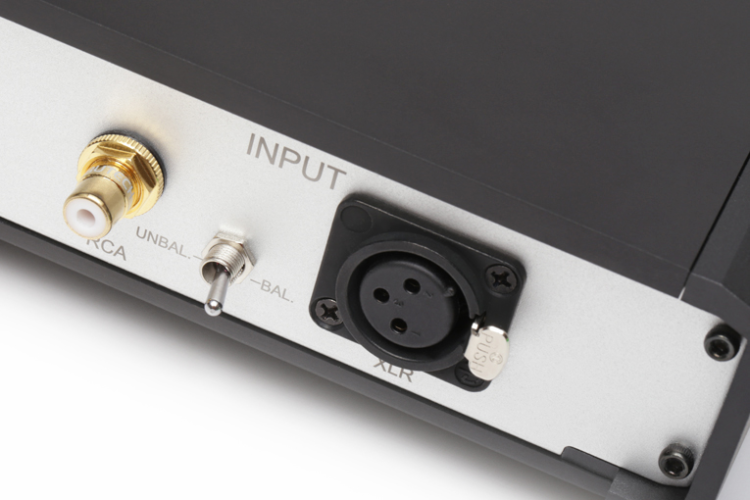
A power button is set flush with the front panel on the left; a small power-indicator light, on the right. The back panel is fairly spartan and includes a Furutech FP-900 (G) RCA jack and a Neutrik NC3FD-L-B-1 XLR input on the right, next to a toggle switch for selecting the input. A pair of ETI BP-20C speaker binding posts occupies the center part of the panel, and to the left are a 12V trigger input, grounding screw, three-pronged IEC power inlet, fuse compartment, and slide switch for choosing between 115V and 230V.
The Evolution Two is specified by NuPrime to deliver 300W RMS into 8 ohms or 600W RMS into 4 ohms, with peak power of 410W into 8 ohms and 820W into 4 ohms. To deliver the necessary current, a 900W (peak power) low-profile toroidal transformer is used with a capacitor bank having a total capacitance of 48,400μF. High-quality PCB copper traces are used to connect the power supply to the amplifier circuitry to maximize power delivery.
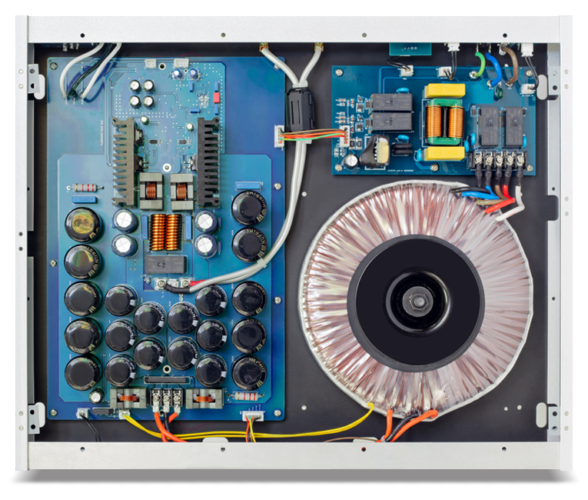
As with other NuPrime amplifiers, the Evolution Two utilizes a very high switching frequency, 650kHz in this case, not only to reduce distortion in the audioband but also to maintain stability with their new ODC (Only Distortion Cancellation) feedback design. As NuPrime explains on the web page for the Evolution Two, ODC “derives the error signal from MOSFET devices and the output-filter circuit directly, significantly reducing the negative-feedback signal, which results in a substantial reduction in distortion.” NuPrime claims THD of 0.003% at 1kHz (5W) and less than 0.006% at 1kHz (50W to 100W) for the Evolution Two. This is roughly an order of magnitude lower than the distortion claimed for their previous power amplifier, the Evolution One.
As with many class-D designs, the Evolution Two is compact for a 300W amplifier. It measures 2.6″H × 16.9″W × 14.6″D, but it weighs a hefty 22 pounds. With its distinctive svelte low profile and widely beveled edges, it is quite attractive. The Evolution Two appears robust and well constructed. It carries a standard two-year warranty.
Setup
The NuPrimes replaced the Anthem M1 monoblocks in my reference system, where they were connected to my Anthem STR preamplifier and MartinLogan Masterpiece Classic ESL 9 loudspeakers. Periodically, I engaged the ARC Genesis room correction system built into the STR preamplifier, for comparison; but for most of this audition, I used no room correction.
As usual, I fed the STR preamplifier digital streams from Tidal as well as some locally stored, mostly high-resolution digital files from my NUC MiniPC, running Roon. Accessories consisted of an AudioQuest Jitterbug jitter reducer; cables from Shunyata Research, AudioQuest, Analysis Plus, and Clarus; and power products from ESP, Zero Surge, and Blue Circle Audio.
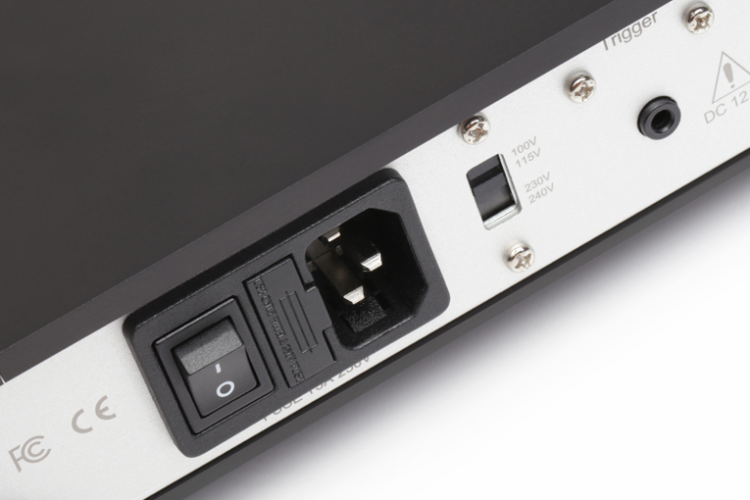
I’m not a huge believer in component burn-in, but I have found that some electronics do sound better after a period of use. I left the NuPrimes on for a few weeks and did some intermittent, casual listening before sitting down for critical assessment. Any changes in the sonic signature of the NuPrimes over that time, if there were any, were small enough to escape my notice;. One thing I did notice was that when first turned on, these amps could sound a little thin, which is not unusual. I experience the same issue with my Anthem M1s. But after just a few minutes of use, they would warm up and stabilize, as do my Anthems. Since I left the units on during most of the review period, this was not an issue.
Sound impressions
The Evolution Twos’ presentation was immediately engaging, evoking fond memories of listening to those early NuForce Reference models nearly two decades ago. The early NuForce amps uncannily combined the power and detail class-D amps were known for with the warmth and refinement more often associated with class-A and the very best class-AB designs. I remember being blown away by the big and bold yet highly sophisticated sound of those compact amps.
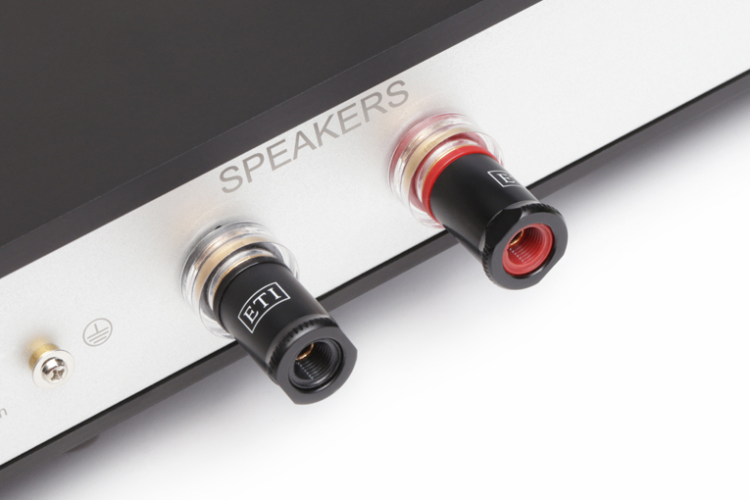
Playing a recording I am very familiar with, “Thunder Road,” from Bruce Springsteen and the E Street Band: Live at the Roxy, West Hollywood, CA, 10/18/1975 (24-bit/192kHz FLAC, nugs.net), I heard those qualities, and more, from these latest NuPrime amps. They presented a dark, dense background and recreated the charged atmosphere that pervaded the venue, brimming with the bustling energy of fervent Springsteen fans. Danny Federici’s sparkling glockenspiel emerged lucidly through the thick ambience alongside Roy Bittan’s forceful piano. Springsteen’s vocals and harmonica had commanding presence; they were chilling in their immediacy. The track still exhibited some of the edginess inherent in this 1970s-era live recording, but the NuPrimes breathed energy and pace into the presentation in an effortless and organic manner. And they did so without altering what I thought to be the intrinsic character of the recording, something only true high-end audio components can do.
Bruce Springsteen and the E Street Band: The Darkness Tour ’78 (16/44.1 FLAC, Columbia-Legacy / Tidal) consists of live recordings of varying quality from different venues. It was used during the tour to promote the album Darkness on the Edge of Town. “Racing in the Street: Live at Capitol Theatre, Passaic, NJ, 09/19/1978” is a somewhat flawed recording in that Max Weinberg’s kick drum and Clarence Clemons’s sax have an exaggerated presence. Springsteen’s vocals, though, were captured with an arresting earnestness, which the NuPrimes reproduced with convincing realism. I sat in rapt attention as I repeatedly played this recording, my favorite version of the timeless Springsteen track.
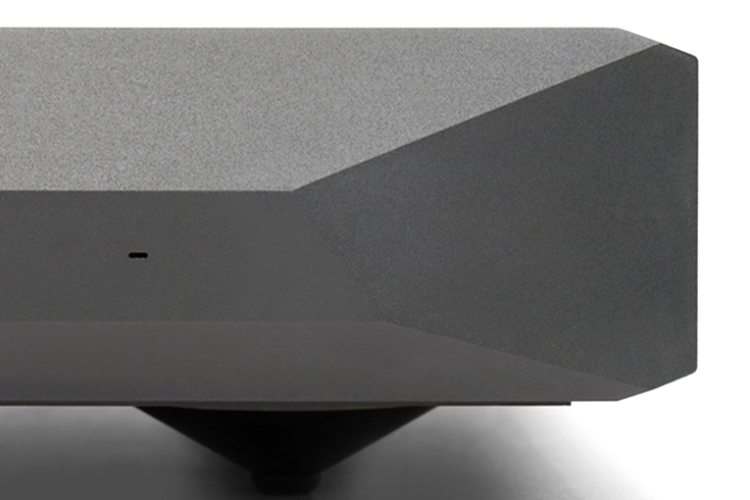
While the NuPrimes instilled a definite sense of ease and naturalness to classic live recordings of Springsteen and the E Street Band, Christine and the Queens’ latest effort, Paranoïa, Angels, True Love (16/44.1 FLAC, Because Music / Tidal), sounded truly epic with its sprawling EDM riffs, orchestral passages, and dreamy vocals. With its gently flowing strings and the echoey overdubbed vocals of Héloïse Adélaïde Letissier, “Full of Life” is a nearly perfect pop recording. It starts out as what appears to be a simple pop ballad. But when the booming beat kicks in at the 1:35 mark, the song is transformed into a full-on EDM track. The bass was booming, but it was not boomy. Each beat was full and rich, conveying absolute solidity and unwavering, perfectly controlled sustain.
“Tears Can Be So Soft” has even more intense bass. It can become a bit repetitive, but it’s the antithesis of one-notey. Each deep, colossal beat was delivered with total command and articulated with exactitude, rising and falling with clear delineation.
The reverb and endless decay of the synth notes on “We Have to Be Friends” made the soundstage spacious and provided an enveloping, reverberant backdrop for the vocals. Played through the NuPrimes, this exquisitely produced and recorded album sounded stunning.
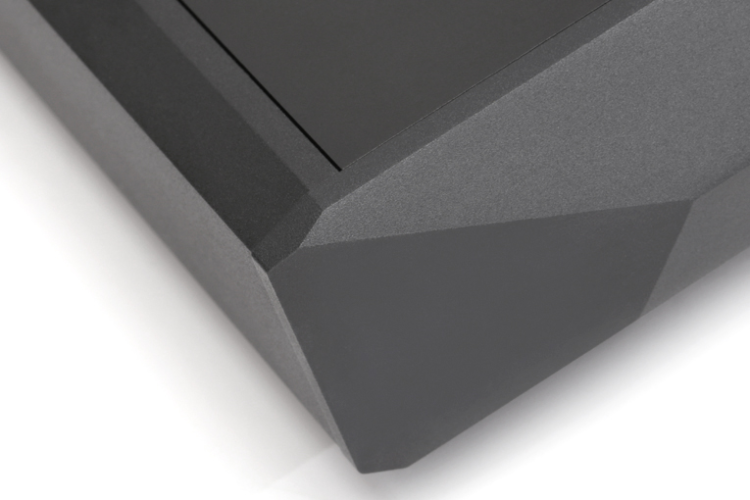
Another recording the NuPrimes delivered with remarkable smoothness and effortlessness was Tchaikovsky and Glazunov Violin Concertos (DSD64 DSF, Teldec / Esoteric), with soloist Maxim Vengerov and the Berlin Philharmonic Orchestra, conducted by Claudio Abbado. These superbly recorded concertos were presented by the NuPrimes in all their glory. The amps infused Vengerov’s violin and the BPO strings with vibrancy and fluidity without compromising the sparklingly clear imaging and exciting dynamics of this Esoteric-mastered recording.
Comparison
I loved having the NuPrime Evolution Two amplifiers in my system. They reminded me a lot of my reference Anthem M1s ($3999 each). Rated at 1000W into 8 ohms, the Anthems have a lot more power than the NuPrimes, but I never felt that the NuPrimes were lacking in that regard even when driving the hybrid electrostatic ML ESL 9s.
Both amplifiers had a similarly neutral sound with just an added touch of richness to make them wonderfully engaging no matter what I played. In both the Anthems and the NuPrimes, this was achieved without sacrificing the precision and detail required to extract the nuanced information present in high-quality recordings.
Playing “Full of Life,” by Christine and the Queens, I noticed that both amps presented a similarly large soundstage populated distinctly by the orchestral parts, backing vocals, and lead vocals. But there were some differences. With the NuPrimes, the higher-pitched notes of the violin and viola sounded more distinct than the lower-pitched notes of the cello and bass. The strings were all more clearly delineated than the backing vocals. Letissier’s lead vocals were imaged slightly more forward with the Anthems, resulting in a greater presence and a more immediate sound, but the NuPrimes did a better job of maintaining the sustain of Letissier’s haunting voice. The most noticeable difference between the two amps was in how they reproduced deep bass. The NuPrimes sounded extremely solid and satisfying, but the Anthems could go a little lower, and with more power, although they too were not always as taut as I would have liked when played at very high volumes.
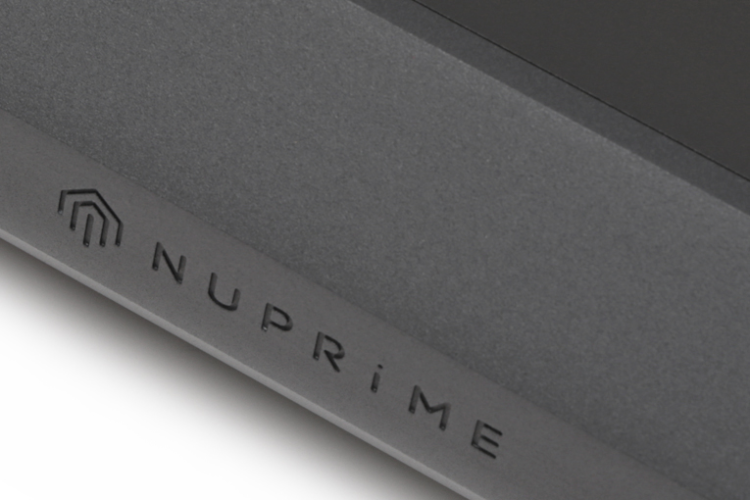
The foregoing observations were made without the use of the STR preamplifier’s ARC Genesis room correction system. When I configured these amplifiers individually with ARC, they maintained their own neutral sound signatures; they were just a touch clearer. This brought the luxuriant vocals on “Full of Life” marginally more forward with the NuPrime amps, giving it most of the immediacy of the Anthem amps without losing any of the precision and depth of imaging. With the Anthem M1s, the bass (including upper bass) became a smidge tighter and more responsive, more visceral. This created the impression of a wider soundstage with more clearly defined, better separated images. Both amps benefited from the use of ARC Genesis but in slightly different ways. With or without ARC, they were equally impressive.
To my ears, the Purifi Eigentakt based NAD Masters M23 stereo/mono power amplifier, which I reviewed in March, sets the standard for a truly high-performance amplifier at a reasonable price—by a wide margin. With a retail price of only $3749, it sounds superb, measures spectacularly well, and has a healthy power rating of 200Wpc into 8 ohms. As I said in my review, it is a “screaming bargain.” Bryston’s spectacular 4B3 ($7495), which I reviewed in June 2017, is also a stellar performer on the test bench, albeit at twice the price. Rated at 300Wpc into 8 ohms, it delivers significantly more power than the NAD, and has a beefier but very neutral sound. There is nothing like a brawny class-AB amplifier to instill a sense of confidence and pride in ownership. These are my two favorite power amplifiers among those I have reviewed in the past few years. I’ll be interested to see Diego Estan’s measurements of the Evolution Two. It may not be quite as neutral as the NAD and Bryston, but I found that its overall high level of performance and marginally warmer sound was just as pleasing and, in fact, may be preferable to some listeners.
Conclusion
NuPrime Audio had fallen off my radar in recent years. The last NuPrime product I reviewed was the IDA-8 integrated amplifier-DAC, which I loved. It was an absolute steal, providing fantastic sound and a healthy amount of power for under $1,000. But that was almost eight years ago. The Evolution Two has reintroduced me to this innovative brand. The market for power amplifiers at the Evolution Two’s price level is now very competitive. But NuPrime has more than kept pace with their reference mono amp, and by keeping its price relatively constant, the Evolution Two rivals the very best in its class.
Link to the review --> https://www.soundstagehifi.com/index.php/equipment-reviews/1833-nuprime-audio-evolution-two-mono-power-amplifier


